Last Friday, the fifth of Av, was the yahrzeit of the great Ari HaKadosh or Arizal, “The Holy Lion of Blessed Memory”, Rabbi Itzchak Luria (1534-1572). Few have had as monumental an impact on Judaism as the Arizal. Despite being an educator for only a couple of years, and passing away at the young age of 37 or 38, his teachings shaped the course of Jewish history for the next five centuries, until the present. Who was the Arizal, what did he reveal, and why was he so influential? Continue reading
Tag Archives: Baal Shem Tov
Journey Through the Heavens
This week we conclude the fourth book of the Torah with a reading of the last two portions. In parashat Masei, “Journeys”, we are given a summary of the Israelites’ travels in the Wilderness. There are a total of forty-two trips and stops along the way. The Baal Shem Tov famously taught that these 42 journeys actually allude to the 42 journeys of every soul. His grandson wrote in Degel Machane Ephraim that “one’s birth and emergence from the mother’s womb is like the Exodus, as is known, and one henceforth goes from journey to journey until arriving at the supernal world…” The journey begins here on Earth with a person emerging from the waters of the womb, much like the Israelites emerged out of the waters of the Red Sea. It continues until the soul returns to its place in the supernal worlds. What do these supernal worlds look like and how long do journeys through those worlds take?
The Talmud outlines the supernal worlds, and states that the distance between each one is a “five hundred-year’s journey” (Chagigah 12b-13a). The first of the “Seven Heavens” is called Vilon, literally a “curtain”. The Talmud describes this simply as the atmosphere above Earth’s surface, and it has no particular spiritual significance. Then comes the Rakia, often poorly translated as “firmament”. The Talmud repeats what the Torah says in the account of Creation that within the Rakia are the sun, moon, stars, and constellations. In other words, Rakia is outer space. When the Sages used the term “fixed” (kevu’in) it does not mean that the stars are “fixed” into a solid firmament, but rather that the stars are all “fixed” in their orbits. (The same word is used when telling us to “fix” specific cyclical times for Torah study.)
The third level is Shechakim, the “millstones” that grind manna. This region can be thought of as the interface between the “physical” world and the “spiritual” world. Indeed, when Rabbi Akiva led three other rabbis into the spiritual worlds of Pardes (recounted in the following pages in the same tractate Chagigah), he tells the others that they will pass by “pure marble stones” along the way. It is appropriate that manna would come from here specifically, as manna was a substance part physical and part spiritual, a blend of both dimensions.
The fourth Heaven is called Zevul, and this is where the “Heavenly Jerusalem” is found. The kohen gadol in its Temple is the angel Michael, who brings offerings upon the Heavenly altar. Most of the other angels dwell above in the fifth Heaven called Ma’on. The next Heaven is called Machon, the realm of the primordial elements. Apparently, here is found snow, hail, dew, rain, and fire, together with storms and whirlwinds. The Talmud then asks what any of us would ask: aren’t these elements here on Earth? The conclusion is that their original (spiritual) source is up in Machon. One might understand this place as God’s own “laboratory”, where He set forth the very foundations of the cosmos. This can be likened to the mystical dimension of Beriah, which serves as the “programming” and “back-end” for the universe. Similarly, the first two lower Heavens of Vilon and Rakia—typically described in very physical and mundane terms—would parallel the lowest realm of Asiyah, while the angelic Ma’on would parallel Yetzirah (perhaps Shechakim is in between, or bridges both).
Finally, the Seventh Heaven is called ‘Aravot. This is the place of souls and spirits, the source of all blessings, as well as the Dew of Resurrection that will revive the dead in the World to Come. Here are the highest classes of angels like Ofanim and Seraphim. And here, too, is the Throne of God. This region parallels the dimension of Atzilut. The Talmud then says there is one more Rakia above, an “eighth” Heaven, but it is so mysterious and sublime it is forbidden to speak of it at all. The source for it is Ezekiel 1:22, which speaks of a Rakia of “terrible ice”. This takes us right back to the beginning of the passage, where there is one opinion stating there are actually two types of Rakia, a lower and higher one (based on Deuteronomy 10:14). This neatly corresponds to the mysterious and highest mystical dimension of Adam Kadmon.
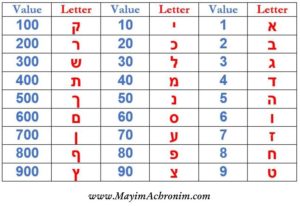 The Deuteronomy verse above mentions both hashamayim and shmei hashamayim, hence the implication of two distinct Rakias. Based on the word hashamayim (השמים), the numerical value of which is 955 (when counting with the mem sofit as 600), it is said that the Heavens are further divided up into 955 levels or compartments. The verse starts with the word hen (הן), “behold”, which has a value of 55, from which is derived that the top 55 levels are reserved for God alone, while the bottom 900 are accessible to souls, spirits, angels, and the like.
The Deuteronomy verse above mentions both hashamayim and shmei hashamayim, hence the implication of two distinct Rakias. Based on the word hashamayim (השמים), the numerical value of which is 955 (when counting with the mem sofit as 600), it is said that the Heavens are further divided up into 955 levels or compartments. The verse starts with the word hen (הן), “behold”, which has a value of 55, from which is derived that the top 55 levels are reserved for God alone, while the bottom 900 are accessible to souls, spirits, angels, and the like.
How Big is the Cosmos?
The Talmud (Chagigah 13a) states that the distance from Earth to the Rakia is a “five hundred-years’ journey”, that the Rakia itself is five hundred years-long, and that the distance between each level of Heaven thereafter is five hundred years. (The Talmud rightly excludes the atmospheric Vilon, which we know scientifically doesn’t extend so far away from Earth’s surface). So, with seven domains (including the upper eighth Rakia, but excluding the Vilon), each five hundred years large, and six spaces between them of five hundred years, that gives us a total size to the cosmos of about 6500 “years”. These are not light years, of course, so how big is the cosmos according to the Talmud?
In Talmudic parlance, a day’s journey (derekh yom) is equivalent to ten parsa, or parasangs. A parsa is four mil, and a mil is two thousand amot, or cubits. In other words, a parsa is 8000 cubits. There are varying definitions to the length of a cubit, the common answer being two feet. In that case, we are looking at 16,000 feet per parsa, or just about five kilometres. However, the Talmud (Pesachim 94a) states that the circumference of the Earth is 6000 parsas, and we know today that the Earth’s circumference is 40,075 kilometres. That would mean a parsa is about 6.68 kilometres, which actually makes more sense because the Sages define a parsa as the distance a person walks in 72 minutes (typical walking speed is about five to six kilometres an hour.) Putting it all together, a derekh yom would be about 67 kilometres, the maximum distance a person could cover if they walked an entire day at average speed.
We can take that number and convert it to “five hundred years” as follows: 67 kilometres per day x 365 days x 500 years = 12,227,500 kilometres. This would be the size of each Heaven, as well as the distance between each Heaven. At first glance, that works out to a total of about 159 million kilometres for the size of the cosmos around Earth, according to the Talmud. Intriguingly, this is roughly the same as a scientific Astronomical Unit (AU), which is about 150 million kilometres, based on the average distance between the Earth and the Sun.
However, the Talmud then goes on to state that each aspect of the angels and the Throne of God is so vast it is equivalent in distance to all of the Seven Heavens combined! The Talmud lists eleven items, so doing the math (159 million x 11) brings one to a cosmos nearly 1.8 billion kilometres wide. As mind-boggling as that is, it is still significantly less than the scientific estimate for the size of the Solar System at 287 billion kilometres. Meanwhile, the whole universe is estimated to be at least 93 billion light years wide (a light year is about 9.5 trillion kilometres).
Perhaps the Sages did not mean that the distances are exactly a five hundred-years’ journey (and maybe not a walking journey), but just that the distances are so vast they are impossible for a human to traverse in one lifetime. Indeed, the Talmud here brings up the case of Nimrod, who sought to build the Tower of Babel to ascend to the Heavens. He was told that a human lifespan is only about 70 years, so how could he even think of attempting to travel to the highest Heavens when there are multiple distances of 500 years’ length?
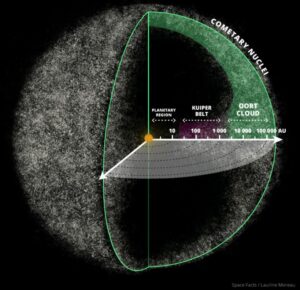 It is interesting to point out that today we know the edge of our Solar System appears to be a “bubble” of ice comets referred to as the Oort Cloud. This region may be related to the “millstones” (or “pure marble stones”) of the third Heaven, Shechakim, or perhaps the “terrible ice” of the mysterious eighth Heaven, the upper Rakia. Whatever the case, both Talmud and science describe vast distances that would be impossible for humans to journey through (at least with current technology). Angels, on the other hand, can traverse such distances. For example, the Talmud recounts Eliyahu once traveling four hundred parsas in one instant to save Rav Kahanah (Kiddushin 40a), while the Zohar (I, 4b-5a) describes Samael as traveling 6000 parsas in one instant. The angelic Merkavah “chariots” are said to regularly journey through 18,000 worlds (Avodah Zarah 3b; Zohar I, 24a; and based on Chagigah 12b, one can understand all of these 18,000 worlds as being within ‘Aravot, the seventh Heaven).
It is interesting to point out that today we know the edge of our Solar System appears to be a “bubble” of ice comets referred to as the Oort Cloud. This region may be related to the “millstones” (or “pure marble stones”) of the third Heaven, Shechakim, or perhaps the “terrible ice” of the mysterious eighth Heaven, the upper Rakia. Whatever the case, both Talmud and science describe vast distances that would be impossible for humans to journey through (at least with current technology). Angels, on the other hand, can traverse such distances. For example, the Talmud recounts Eliyahu once traveling four hundred parsas in one instant to save Rav Kahanah (Kiddushin 40a), while the Zohar (I, 4b-5a) describes Samael as traveling 6000 parsas in one instant. The angelic Merkavah “chariots” are said to regularly journey through 18,000 worlds (Avodah Zarah 3b; Zohar I, 24a; and based on Chagigah 12b, one can understand all of these 18,000 worlds as being within ‘Aravot, the seventh Heaven).
Then there’s Enoch, who went to “walk with God” (Genesis 5:24) and journeyed through the Heavenly worlds, as described in the apocryphal Book of Enoch and referenced many times throughout the Zohar. And we can’t forget the sages led by Rabbi Akiva who went up to Pardes, with Rabbi Akiva reminding them that they will pass through the “pure marble stones” (of the third Heaven), after which they saw various Heavenly beings and angels (most notably Metatron, identified as that selfsame Enoch) in the fourth, fifth, and sixth Heavens. Finally, in the World to Come, each righteous person will be able to traverse the cosmos, with a reward of 310 worlds (Uktzin 3:12) or perhaps even 400 worlds (Zohar I, 127b) to explore and delight in.
May we merit to see that day soon!
Lots More Information:
The Four Who Entered Pardes (Video)
Metatron & the Book of Enoch (Video)
Kefitzat HaDerekh: Wormholes in the Torah
For those who liked the essay on ‘The Strings That Hold the World’ from several weeks ago, there is an updated, revised, and expanded version here.
And since it’s that time of year, please review ‘The Right Way to Observe the Three Weeks’ here.
The Second and Fifth Commandments
In this week’s parasha, Yitro, we read the Ten Commandments. The Fifth Commandment is to honour one’s parents which, while certainly important, might seem like it doesn’t really belong in the “Top 10” biggest mitzvot. Can we really place honouring parents in the same category as the prohibitions of murder and adultery? Why is it so high up there?
One good explanation emerges when we consider honouring parents in relation to the Second Commandment: to have no other gods before Hashem, and not make any images or statues of idols. In ancient times, idolatry often went together with ancestor worship. In fact, there is evidence that the Canaanites used to worship their ancestors, alongside a pantheon of gods. So, perhaps the Torah meant to say: you must not have any gods before Hashem, but that doesn’t mean you shouldn’t honour your parents! Parents certainly shouldn’t be worshipped, but they should be treated with dignity and given an extra measure of respect.
Another explanation comes from a teaching of our Sages that there are three partners in the creation of a human being: father, mother, and God. The child-parent relationship is a mini-metaphor for the human-God relationship. If one cannot properly honour their parents, will they be able to properly honour God? And if one isn’t grateful for their parents bringing them into this world, they probably won’t be too grateful that God did, either.
Of course, some child-parent relationships are very strenuous, making it difficult for children to honour their parents in these cases. While there are definitely exceptions, the same can be said for the human-God relationship, which goes through rocky periods, too, resulting in people getting angry or upset at God for various trials and tribulations He sends their way. In short, developing our ability to appreciate our parents—even in conditions that are less than ideal—is good practice for developing the same approach to God, no matter what He throws our way. (It’s worth recalling Isaac Newton’s words that “Trials are medicines which our gracious and wise Physician gives because we need them; and the proportions, the frequency, and weight of them, to what the case requires. Let us trust His skill and thank Him for the prescription.”)
Going back to the Second Commandment, we are told not to make engravings or images of what “is in the Heavens above, or on the Earth below, or in the waters of the Earth.” (Exodus 20:4) This means it is prohibited to make images of any beings, whether celestial or biological (as animals were often worshipped in pagan religions). In fact, there’s been an issue of depicting lions upon the curtain covering the aron in the synagogue going back centuries. Some Ashkenazi authorities were lenient on this, especially if the image was a lion in profile, but most Sephardic authorities were stringent and forbid such images. This is especially the case in synagogues, since we don’t want it to appear as if people are praying towards these images. That said, we do know that several of the flags of the Twelve Tribes had animals depicted on them (such as the lion on Judah’s flag, the deer on Naftali’s flag, and the snake on Dan’s flag). So, outside of synagogues there isn’t necessarily an issue of having such images.
The biggest problem is depictions of human-like faces. The Ba’al haTurim (Rabbi Yakov ben Asher, 1269-1343) comments on the same Exodus verse above that the word temunah (תמונה), “image” has the exact numerical value (501) as partzuf adam (פרצוף אדם), “the face of a human”. Rabbi Ovadia of Sforno (c. 1470-1550) adds that you cannot make such an image “even if you do not mean to use it as an object of worship”! Ultimately, the Shulchan Arukh rules that it is forbidden to make human-like depictions only if the faces protrude, like in statues or embossed engravings (Yoreh De’ah 141). A flat image, like a painting or mural, is okay. The same should apply to photographs today.
Nonetheless, the problem with such likenesses is that they may indeed end up being used for idolatrous purposes, even though they were not produced with that intention. And unfortunately, this is precisely what has happened in some ultra-Orthodox circles today with regards to portraits of rabbis.
Pictures of Rabbis
Having a portrait of a great rabbi on the wall is undoubtedly a nice way to stay inspired and keep the valuable teachings of that rabbi in mind. That said, it is vital to remember that these are just photographs, and nothing else. Some in the ultra-Orthodox world seem to have forgotten this. My wife recently spoke to a woman who told her she doesn’t take off her wig at home because the rabbis hanging on the walls shouldn’t “see” her immodestly. While modesty is commendable, believing that images on a wall have some kind of awareness is not. Such a view is not only irrational, it may well be a complete transgression of the Second Commandment. (I haven’t forgotten the Talmud’s story of Kimchit, who declared that the walls of her house never saw her hair—but that was obviously a metaphorical expression, and not a literal belief in walls being conscious and having a sense of sight.)
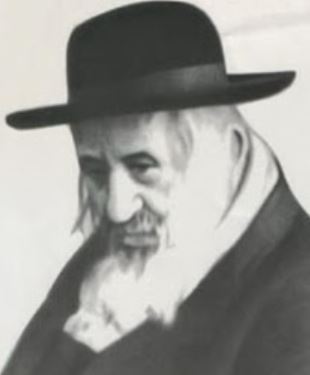 Nowadays, one can get a portrait of the so-called “mouser rebbe” (at right), whose image can supposedly drive away mice infestations. The portrait is actually of the Hasidic rebbe Yeshaya “Shayale” Steiner of Kerestir, Hungary (1851-1925). The mouser rebbe “segulah” is really just avodah zarah, believing that a human image has some kind of spiritual or magical power. Besides, I highly doubt that Rabbi Steiner would have appreciated his face being used for pest control.
Nowadays, one can get a portrait of the so-called “mouser rebbe” (at right), whose image can supposedly drive away mice infestations. The portrait is actually of the Hasidic rebbe Yeshaya “Shayale” Steiner of Kerestir, Hungary (1851-1925). The mouser rebbe “segulah” is really just avodah zarah, believing that a human image has some kind of spiritual or magical power. Besides, I highly doubt that Rabbi Steiner would have appreciated his face being used for pest control.
A much more popular image is that of the Lubavitcher Rebbe, which is plastered just about everywhere nowadays. The Rebbe has become, by far, the most recognizable rabbinic face on the planet. When my wife was pregnant with our first child, a Lubavitcher friend gave her a keychain with the Rebbe’s photo on it, promising that it would help with an easy delivery. What is for some just a keychain has become for others a full-blown amulet! Indeed, for many within Chabad, images of the Rebbe have taken on a life of their own, and are deeply intertwined with promoting Chabad messianism (as explored in an interesting paper here).
Some have a picture of who they believe to be Rabbi Shimon bar Yochai on their walls. First of all, Rashbi lived nearly two millennia ago and there are, of course, no authentic representations of his face. (Some cite an absurd legend that because he was wanted by the Romans, they had a “mugshot” of him.) Second of all, Rashbi’s own Zohar says he was especially careful not to make any depictions whatsoever, in light of the Second Commandment (see, for instance, Tikkunei Zohar 121a). Even if the image is seemingly innocent and has no connection to idolatry, Rashbi warned it may eventually lead to idolatry anyway and cause people to falter and sin. Rashbi would certainly not be happy with the supposed “portraits” of him currently hanging on people’s walls.
The Zohar (I, 192a) does suggest that if one wants to better understand the teachings of their master, they can imagine their master’s face in their mind. It could just be that the Zohar is giving a tip or memory aid to help a person recall the teachings of their rabbi. Whatever the case, it has nothing to do with actually making physical depictions of the master’s face, which the Zohar would frown upon. The Zohar here uses Joseph as an example, saying that he would always imagine his father Jacob’s face, and this would inspire and motivate him to excel and succeed. Rabbi portraits should be just that: inspirational and motivational.
The fact that the Zohar connects the notion of “father” with the notion of “rabbi” is not coincidental. After all, the honour accorded to one’s rabbi is often compared to the honour accorded to one’s parent, and there is much discussion in Jewish law regarding who takes priority when it comes to the honour of one over the other. In some cases, like Joseph, a person’s father is their rabbi, too! Either way, we once again see a link between the Second Commandment and the Fifth Commandment.
Fake Portraits of Rabbis
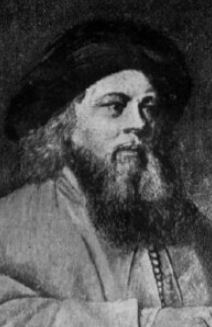
Baal Shem of London, not the Baal Shem Tov
Rashbi’s face is not alone in the fake portrait department; there are numerous other “portraits” of rabbis which are not actually their portraits. The supposed picture of the Baal Shem Tov is actually the Baal Shem of London, Chaim Shmuel Yaakov Falk (1708-1782). He was also known as “Doctor Falckon” and was nearly burned at the stake for sorcery in Germany before fleeing to London! Worse still, the great Rabbi Yakov Emden accused him of being a Shabbatean! The Falk portrait was sketched by John Singleton Copley (1738-1815), a Christian artist famous for his portraits of various priests and dignitaries. Somehow, it became confused with the founder of Hasidism, probably because of the “Baal Shem” title.
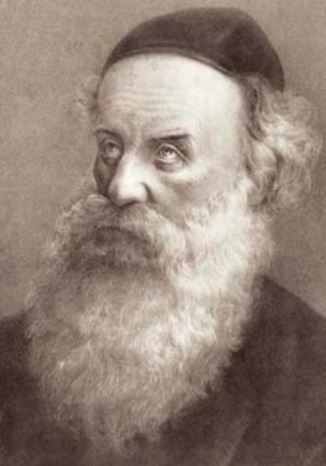
Apparently the Alter Rebbe
Meanwhile, the well-known “portrait” of the Alter Rebbe (Rabbi Schneur Zalman of Liadi, 1745-1812, founder of Chabad) was produced by Boris Schatz (1866-1932), who was only born some five decades after the Alter Rebbe passed away. Schatz was a friend of the Schneersohns. He claimed to have seen a true portrait of the Rebbe in the collection of a Polish count (called Tyszkiewicz in some sources). According to legend, the portrait was drawn by a soldier guarding the Alter Rebbe while he was imprisoned in 1798 (or 1796). Historians seriously doubt the credibility of any of these claims, though Chabad insists that the portrait is authentic. Schatz was primarily a sculptor (which is technically forbidden based on the Second Commandment), and served as the official court sculptor for Prince Ferdinand I of Bulgaria. He later become a prominent Zionist leader, and proposed the creation of a Jewish arts school at the Fifth Zionist Congress in 1905. The following year, he founded the Bezalel Academy of Arts in Jerusalem, still one of Israel’s preeminent art schools today. Schatz’s colleagues from Bezalel later said that Schatz had admitted the Alter Rebbe portrait was a forgery.
 And what many people believe to be the Rambam (Rabbi Moshe ben Maimon, 1138-1204) was not the Rambam. For one, the man in the picture has his peyot shaved! (To fix the problem, modern renditions of the portrait add some artificial peyot, of course.) The current image is from the 1800s, based on an earlier work thought to be from the 15th century (see here). Supposedly, that image was based on an authentic engraving of the Rambam, but that’s unlikely considering the Rambam ruled such embossed engravings are forbidden (Mishneh Torah, Avodah Zarah 3:10-11), and the Rambam would not have had his peyot shaved. Some have proposed that the portrait of the Rambam is actually derived from an image of an Arab or Turkic scholar!
And what many people believe to be the Rambam (Rabbi Moshe ben Maimon, 1138-1204) was not the Rambam. For one, the man in the picture has his peyot shaved! (To fix the problem, modern renditions of the portrait add some artificial peyot, of course.) The current image is from the 1800s, based on an earlier work thought to be from the 15th century (see here). Supposedly, that image was based on an authentic engraving of the Rambam, but that’s unlikely considering the Rambam ruled such embossed engravings are forbidden (Mishneh Torah, Avodah Zarah 3:10-11), and the Rambam would not have had his peyot shaved. Some have proposed that the portrait of the Rambam is actually derived from an image of an Arab or Turkic scholar!
In short, to have images of rabbis for inspiration, motivation, or commemoration is totally fine. Anything more than that risks being idolatrous, and may well be a transgression of the Second Commandment. And, please, make sure the rabbi portraits you have are actually portraits of those rabbis!

